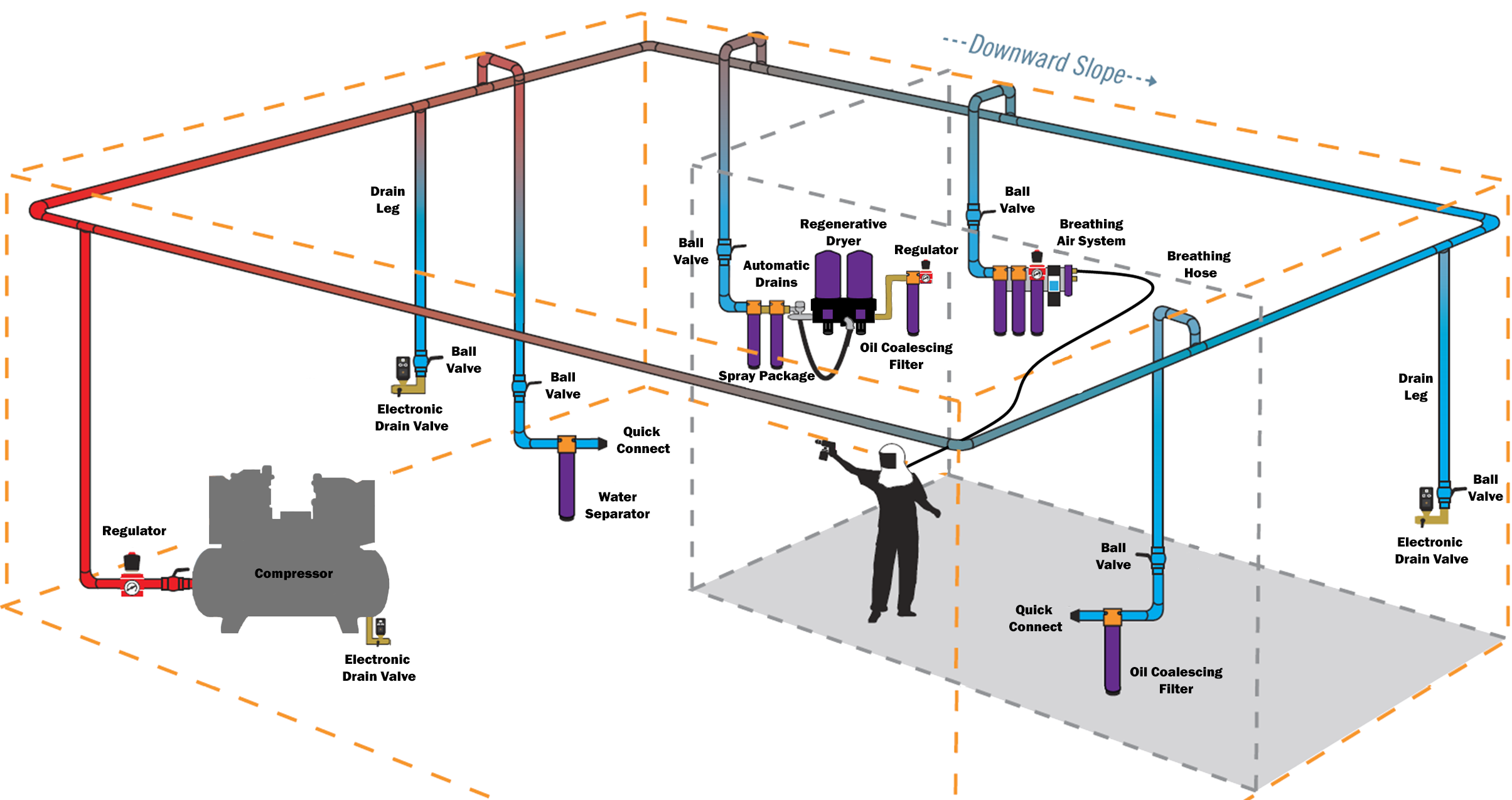3 min read
Air Filters, Dryers & Drains: Where to Place Them
Tsunami Team
:
Apr 20, 2021 12:00:00 AM

Pneumatic applications perform best with a consistent supply of dry, clean air. Having pristine compressed air is vital to reduce maintenance costs and downtime, while increasing efficiency and quality. To ensure you are getting the most of your air system, you need to know where to place each component, and in which order. In a shop or facility, the distance and placement of the air compressor, air dryers, compressed air filters, and filter drains determine the performance of the air system.
We're going to discuss how to set up a reliable compressed air system:
- Understanding the Basics of Compressed Air
- Where to Install Compressed Air Filters
- Where to Install Compressed Air Dryers
- Where to Install Automatic Drains
- The Best Compressed Air System Solutions
Understanding the Basics of Compressed Air
To understand the basics, it's good to know how to plumb your air system in accordance with the basic best practices of compressed air. By plumbing your system properly, you can avoid unnecessary downtime and focus on where to place each system component.
Where to install Compressed Air Filters
The further away from the air compressor, the more effective your air filtration will work. Compressed air filters should sit as close to the equipment as possible to catch condensed liquid in the piping.

How Condensation Affects An Air System
Condensation in the piping occurs when the air cools after it leaves the air compressor. There's a rule of 20 that states:
For every 20°F the air cools, 50% of the water vapor falls out as a liquid.
By “stacking” your compressed air filtration, you can assure you're properly cleaning the air for your application. The most efficient way to stack your air filters is in the following order: water separators for bulk water and contaminants, oil coalescing filters for oil aerosols and fine particulates, and activated carbon filters for the removal of oil vapors.
Looking for a visual of what this looks like for a shop air system? Download the air system diagram guide here.
Where to install Compressed Air Dryers

For all compressed air systems, using some form of drying technology near the compressor is essential to an effectively designed air system. An air dryer is the final touch to prevent water from entering your equipment or application.
For applications requiring even dryer air, the ideal placement would be right before the point-of-use. This allows the compressed air to drop in temperature so the water vapor can be converted to liquid moisture and captured by the air filters; allowing for the dryer to remove any lingering humidity.
While some applications might function better with ultra-dry air, you may need to implement different technology. Installing the same system to every application can be costly. If the system isn't in constant use or part of an important application, consider a cost-effective alternative.
Where to install Automatic Drains

Automatic drains are the finishing touch to an air system you can be proud of. A functioning drain helps ensure excess liquid exits your air filter, preventing contaminants from entering your dryer and harming your equipment or application.
There are three locations automatic drains are required to be present in order for an efficient, well-running system:
- Compressed air receiver tank:
This allows for the draining of liquid that will condense in the tank and cause corrosion to the internal reservoir as well as take up valuable storage space for your compressed air volume. - Anywhere there is a drip leg throughout the air piping:
Placing an automatic drain on those drip legs removes collected moisture thereby preventing it from being recaptured by the air stream. Catching and draining the liquid in the air pipes will ease the work of the air filters downstream. - On all air filters and air dryers:
Automatic drains are recommended over manual drains in the event the operator forgets to drain the systems; not to mention, not manually draining them often enough could prevent moisture carryover.
The Best Compressed Air System Solutions
Where you install the components of your air system impacts how well it runs, the quality of production, and the quality of operations. Air filters, air dryers, and drains all have their respective spots on the shop floor, and adhering to general guidelines will vastly improve the life and function of each respective component. It starts at the air filter, and ends at the input of your application. All you need is an air filter, air dryer, and a few drains to start on your journey.
If you have any questions on where to place the components of your air system throughout your shop, we have a team of experts available to help you find the perfect spot.



